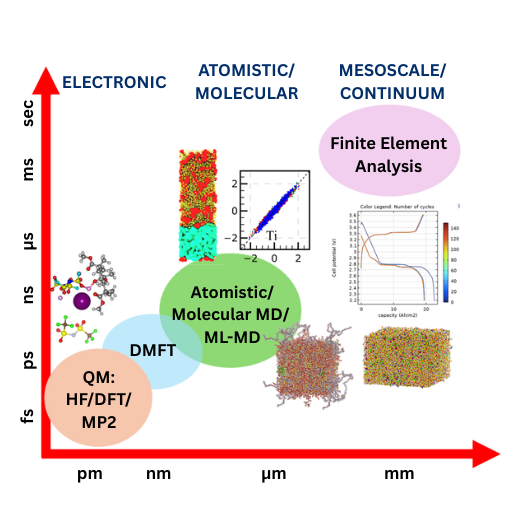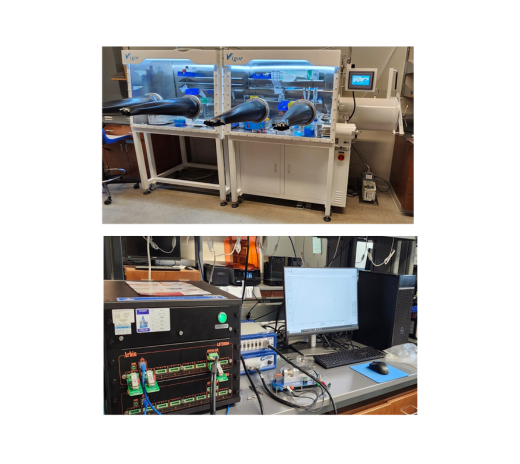
Welcome to the Anh Ngo Research Group
By focusing on the integration of modeling, computation, machine learning, and experimental methods, our group aims to accelerate the discovery and development of advanced materials and devices. We are driven to understand complex materials systems across diverse length and time scales, applying such insight to address critical challenges in energy storage, electronics, and sustainable technologies. Our research covers a broad spectrum of topics, including experimental research on next-generation battery materials, quantum materials with strong electronic correlations, renewable energy systems, heterogeneous catalysis, and nanoscale devices. We utilize a range of modeling approaches – from first-principles quantum mechanical simulations to continuum and device-level models. These computational methods are further enhanced by machine learning techniques and validated through cutting-edge experimental characterization.

Quantum-to-Device Modelling Lab
- In our lab, we are focused on Atomistic-to-Continuum modeling complemented with machine learning studies to accelerate the design of next-generation battery materials.
- By bridging quantum chemistry, atomistic simulations, and mesoscale-to-continuum models, we capture critical phenomena ranging from electron-level interactions to ion transport and device-level performance.
- This multiscale approach allows us to predict and optimize the efficiency, durability, and safety of advanced energy storage systems.

Experimental Lab
- At our cutting-edge research lab, we are dedicated to developing high-tech solutions to the current problems in the area of energy storage.
- Our main focus is on the development of Li metal batteries using Li anodes, novel electrolytes and nickel-rich cathode materials.
- By pushing the boundaries of solid and liquid electrolytes, we are targeting to advance the safety, energy density and reliability of Li metal batteries.
- In addition, we perform high-end characterization techniques to unravel the full potential of each component of the Li batteries.
- But we’re not stopping at lithium. We’re also diving into the world of sodium (Na) ion batteries.